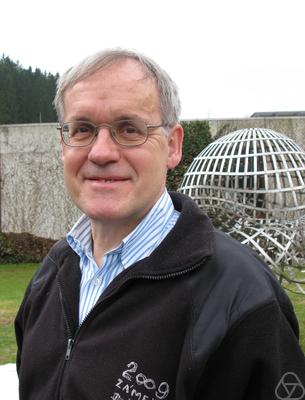|
Combinatorica
''Combinatorica'' is an international journal of mathematics, publishing papers in the fields of combinatorics and computer science. It started in 1981, with László Babai and László Lovász as the editors-in-chief with Paul Erdős as honorary editor-in-chief. The current editors-in-chief are Imre Bárány and József Solymosi. The advisory board consists of Ronald Graham, Gyula O. H. Katona, Miklós Simonovits, Vera Sós, and Endre Szemerédi. It is published by the János Bolyai Mathematical Society and Springer Verlag. The following members of the '' Hungarian School of Combinatorics'' have strongly contributed to the journal as authors, or have served as editors: Miklós Ajtai, László Babai, József Beck, András Frank, Péter Frankl, Zoltán Füredi, András Hajnal, Gyula Katona, László Lovász, László Pyber, Alexander Schrijver, Miklós Simonovits, Vera Sós, Endre Szemerédi, Tamás Szőnyi, Éva Tardos, Gábor Tardos.{{cite web, url=https://www.springer.com/ma ... [...More Info...] [...Related Items...] OR: [Wikipedia] [Google] [Baidu] |
Fulkerson Prize
The Fulkerson Prize for outstanding papers in the area of discrete mathematics is sponsored jointly by the Mathematical Optimization Society (MOS) and the American Mathematical Society (AMS). Up to three awards of $1,500 each are presented at each (triennial) International Symposium of the MOS. Originally, the prizes were paid out of a memorial fund administered by the AMS that was established by friends of the late Delbert Ray Fulkerson to encourage mathematical excellence in the fields of research exemplified by his work. The prizes are now funded by an endowment administered by MPS. Winners SourceMathematical Optimization Society* 1979: ** Richard M. Karp for classifying many important NP-complete problems. ** Kenneth Appel and Wolfgang Haken for the four color theorem. ** Paul Seymour for generalizing the max-flow min-cut theorem to matroids. * 1982: ** D.B. Judin, Arkadi Nemirovski, Leonid Khachiyan, Martin Grötschel, László Lovász and Alexander Schrijver for the e ... [...More Info...] [...Related Items...] OR: [Wikipedia] [Google] [Baidu] |
Imre Bárány
Imre Bárány (Mátyásföld, Budapest, 7 December 1947) is a Hungarian mathematician, working in combinatorics and discrete geometry. He works at the Rényi Mathematical Institute of the Hungarian Academy of Sciences, and has a part-time appointment at University College London. Notable results * He gave a surprisingly simple alternative proof of László Lovász's theorem on Kneser graphs. * He gave a new proof of the Borsuk–Ulam theorem. * Bárány gave a colored version of Carathéodory's theorem. * He solved an old problem of James Joseph Sylvester on the probability of random point sets in convex position. * With Van H. Vu proved a central limit theorem on random points in convex bodies. * With Zoltán Füredi he gave an algorithm for mental poker. * With Füredi he proved that no deterministic polynomial time algorithm determines the volume of convex bodies in dimension ''d'' within a multiplicative error ''d''''d''. * With Füredi and János Pach he proved th ... [...More Info...] [...Related Items...] OR: [Wikipedia] [Google] [Baidu] |
Ronald Graham
Ronald Lewis Graham (October 31, 1935July 6, 2020) was an American mathematician credited by the American Mathematical Society as "one of the principal architects of the rapid development worldwide of discrete mathematics in recent years". He was president of both the American Mathematical Society and the Mathematical Association of America, and his honors included the Leroy P. Steele Prize for lifetime achievement and election to the National Academy of Sciences. After graduate study at the University of California, Berkeley, Graham worked for many years at Bell Labs and later at the University of California, San Diego. He did important work in scheduling theory, computational geometry, Ramsey theory, and quasi-randomness, and many topics in mathematics are named after him. He published six books and about 400 papers, and had nearly 200 co-authors, including many collaborative works with his wife Fan Chung and with Paul Erdős. Graham has been featured in ''Ripley's Believe ... [...More Info...] [...Related Items...] OR: [Wikipedia] [Google] [Baidu] |
Alexander Schrijver
Alexander (Lex) Schrijver (born 4 May 1948 in Amsterdam) is a Dutch mathematician and computer scientist, a professor of discrete mathematics and optimization at the University of Amsterdam and a fellow at the Centrum Wiskunde & Informatica in Amsterdam.Profile CWI, retrieved 2012-03-30. Since 1993 he has been co-editor in chief of the journal ''''.''Combinatorica'' journal home page Springer, retrieved 2012-03-30. Biography Schrijver earned his Ph.D. in 1977 from the |
László Pyber
''László Pyber'' (born 8 May 1960 in Budapest) is a Hungarian mathematician. He is a researcher at the Alfréd Rényi Institute of Mathematics, Budapest. He works in combinatorics and group theory. Biography Pyber received his Ph.D. from the Hungarian Academy of Sciences in 1989 under the direction of László Lovász and Gyula O.H. Katona with the thesis ''Extremal Structures and Covering Problems.'' In 2007, he was awarded the Academics Prize by the Hungarian Academy of Sciences. In 2017, he was the recipient of an ERC Advanced Grant. Mathematical contributions Pyber has solved a number of conjectures in graph theory. In 1985, he proved the conjecture of Paul Erdős and Tibor Gallai that edges of a simple graph with ''n'' vertices can be covered with at most ''n-1'' circuits and edges. In 1986, he proved the conjecture of Paul Erdős that a graph with ''n'' vertices and its complement can be covered with ''n''2/4+2 cliques. He has also contributed to the study ... [...More Info...] [...Related Items...] OR: [Wikipedia] [Google] [Baidu] |
András Hajnal
András Hajnal (May 13, 1931 – July 30, 2016) was a professor of mathematics at Rutgers University and a member of the Hungarian Academy of Sciences known for his work in set theory and combinatorics. Biography Hajnal was born on 13 May 1931,Curriculum vitae in , . He received his university diploma (M.Sc. degree) in 1953 from the , his |
Discrepancy Of Hypergraphs
Discrepancy of hypergraphs is an area of discrepancy theory. Definitions In the classical setting, we aim at partitioning the vertices of a hypergraph \mathcal=(V, \mathcal) into two classes in such a way that ideally each hyperedge contains the same number of vertices in both classes. A partition into two classes can be represented by a coloring \chi \colon V \rightarrow \. We call −1 and +1 ''colors''. The color-classes \chi^(-1) and \chi^(+1) form the corresponding partition. For a hyperedge E \in \mathcal, set :\chi(E) := \sum_ \chi(v). The ''discrepancy of \mathcal with respect to \chi'' and the ''discrepancy of \mathcal'' are defined by :\operatorname(\mathcal,\chi) := \; \max_ , \chi(E), , :\operatorname(\mathcal) := \min_ \operatorname(\mathcal, \chi). These notions as well as the term 'discrepancy' seem to have appeared for the first time in a paper of Beck.J. Beck: "Roth's estimate of the discrepancy of integer sequences is nearly sharp", page 319-325. Combinatorica, ... [...More Info...] [...Related Items...] OR: [Wikipedia] [Google] [Baidu] |
András Frank
András Frank (born 3 June 1949) is a Hungarian mathematician, working in combinatorics, especially in graph theory, and combinatorial optimisation. He is director of the Institute of Mathematics of the Faculty of Sciences of the Eötvös Loránd University, Budapest. Mathematical work Using the LLL-algorithm, Frank, and his student, Éva Tardos developed a general method, which could transform some polynomial-time algorithms into strongly polynomial. He solved the problem of finding the minimum number of edges to be added to a given undirected graph so that in the resulting graph the edge-connectivity between any two vertices ''u'' and ''v'' is at least a predetermined number ''f''(''u'',''v''). Degrees, awards He received the Candidate of Mathematical Science degree in 1980, advisor: László Lovász, and the Doctor of Mathematical Science degree (1990) from the Hungarian Academy of Sciences. In 1998 he was an Invited Speaker of the International Congress of Mathematician ... [...More Info...] [...Related Items...] OR: [Wikipedia] [Google] [Baidu] |
Zoltán Füredi
Zoltán Füredi (Budapest, Hungary, 21 May 1954) is a Hungarian people, Hungarian mathematician, working in combinatorics, mainly in discrete geometry and extremal combinatorics. He was a student of Gyula O. H. Katona. He is a corresponding member of the Hungarian Academy of Sciences (2004). He is a research professor of the Alfréd Rényi Institute of Mathematics, Rényi Mathematical Institute of the Hungarian Academy of Sciences, and a professor at the University of Illinois Urbana-Champaign (UIUC). Füredi received his Candidate of Sciences degree in mathematics in 1981 from the Hungarian Academy of Sciences. Some results * In infinitely many cases he determined the maximum number of edges in a Graph (discrete mathematics), graph with no cycle graph, ''C''4. * With Paul Erdős he proved that for some ''c''>1, there are ''c''''d'' points in ''d''-dimensional space such that all triangles formed from those points are triangle#By internal angles, acute. * With Imre Bárány he pro ... [...More Info...] [...Related Items...] OR: [Wikipedia] [Google] [Baidu] |
Miklós Simonovits
Miklós Simonovits (4 September 1943 in Budapest) is a Hungarian mathematician who currently works at the Rényi Institute of Mathematics in Budapest and is a member of the Hungarian Academy of Sciences. He is on the advisory board of the journal ''Combinatorica''. He is best known for his work in extremal graph theory and was awarded Széchenyi Prize in 2014. Among other things, he discovered the method of progressive induction which he used to describe graphs which do not contain a predetermined graph and the number of edges is close to maximal. With Lovász, he gave a randomized algorithm using ''O''(''n''7 log2 ''n'') separation calls to approximate the volume of a convex body within a fixed relative error. Simonovits was also one of the most frequent collaborators with Paul Erdős, co-authoring 21 papers with him. Career He began his university studies at the Mathematics department of Eötvös Loránd University in 1962, after winning silver and bronze medalat the In ... [...More Info...] [...Related Items...] OR: [Wikipedia] [Google] [Baidu] |
Gábor Tardos
Gábor Tardos (born 11 July 1964) is a Hungarian mathematician, currently a professor at Central European University and previously a Canada Research Chair at Simon Fraser University. He works mainly in combinatorics and computer science. He is the younger brother of Éva Tardos. Education and career Gábor Tardos received his PhD in Mathematics from Eötvös University, Budapest in 1988. His counsellors were László Babai and Péter Pálfy. He held postdoctoral posts at the University of Chicago, Rutgers University, University of Toronto and the Princeton Institute for Advanced Study. From 2005 to 2013, he served as a Canada Research Chair of discrete and computational geometry at Simon Fraser University. He then returned to Budapest to the Alfréd Rényi Institute of Mathematics where he has served as a research fellow since 1991. Mathematical results Tardos started with a result in universal algebra: he exhibited a maximal clone of order-preserving operations that is ... [...More Info...] [...Related Items...] OR: [Wikipedia] [Google] [Baidu] |
János Bolyai Mathematical Society
The János Bolyai Mathematical Society (Bolyai János Matematikai Társulat, BJMT) is the Hungarian mathematical society, named after János Bolyai, a 19th-century Hungarian mathematician, a co-discoverer of non-Euclidean geometry. It is the professional society of the Hungarian mathematicians, applied mathematicians, and mathematics teachers. It was founded in 1947, as one of the two successor societies of the Mathematical and Physical Society (Matematikai és Fizikai Társulat) founded in 1891. It is a member-society of the European Mathematical Society. Presidents of the Society * László Rédei (1947–1949) * György Alexits (1949–1963) * György Hajós (1963–1972) * László Fejes Tóth (1972–1975) * Pál Turán (1975–1976) * (1976–1980) * Ákos Császár (1980–1990) * András Hajnal (1990–1996) * Imre Csiszár (1996–2006) * Gyula Katona (2006–2018) * Péter Pál Pálfy (2018–) Periodicals The society publish ... [...More Info...] [...Related Items...] OR: [Wikipedia] [Google] [Baidu] |


